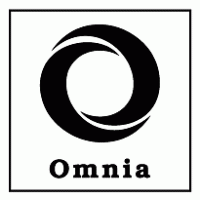
Omnia Dynamic Pricing: Complete Buyer's Guide
Transparent AI-powered pricing optimization platform
Omnia Dynamic Pricing positions itself as the transparent AI-powered pricing optimization platform for mid-market to enterprise ecommerce retailers who demand visibility into their pricing decisions. The platform's core value proposition centers on visual strategy configuration through its proprietary Pricing Strategy Tree™ interface, enabling business users to manage complex pricing rules without technical dependencies [38][45].
Market Position & Maturity
Market Standing
Omnia occupies a specialized position within the AI-powered pricing optimization market, emphasizing transparency and business user control advantages [38][45].
Company Maturity
Customer base maturity is evidenced by major retail implementations including Philips, Decathlon, and HP [39][51].
Growth Trajectory
The platform's enterprise customer base and documented customer outcomes provide evidence of market acceptance within its target segment [39][51].
Industry Recognition
Industry recognition and third-party validation require additional verification, though the platform's enterprise customer base provides evidence of market acceptance [39][51].
Longevity Assessment
Long-term viability is supported by the platform's enterprise customer relationships and technical infrastructure scale [39][51].
Proof of Capabilities
Customer Evidence
Omnia's capabilities are proven through major retail implementations including Philips, Decathlon, and HP [39][51].
Quantified Outcomes
The Philips deployment achieved 75% reduction in pricing complaints and double-digit direct-to-consumer sales growth across 20 countries during a four-year implementation period [51].
Case Study Analysis
The Philips global implementation serves as the most comprehensive documented case study, demonstrating the platform's ability to handle complex multinational retail operations [51].
Market Validation
The platform's customer base concentration among major retailers indicates market validation within the enterprise segment [39][51].
Competitive Wins
Documented competitive wins include selection over DynamicPricing AI for enterprise-grade scalability and single sign-on (SSO) support [40].
Reference Customers
Major retailers such as Philips, Decathlon, and HP represent enterprise-level deployments [39][51].
AI Technology
Omnia Dynamic Pricing operates through a hybrid AI architecture that combines machine learning algorithms with business rule governance, distinguishing itself from purely algorithmic competitors through its 'no-black-box' methodology [38][50].
Architecture
The system's technical architecture enables sub-1-minute price adjustments during flash sales and provides electronic shelf label integration for omnichannel synchronization [38].
Primary Competitors
Enterprise leaders like Competera and PROS dominate with comprehensive ML-powered platforms, while mid-market players like Omnia and Quicklizard focus on ecommerce-native dynamic pricing [competitive analysis context].
Competitive Advantages
Omnia's primary differentiators include the Pricing Strategy Tree™ visual interface, sub-1-minute price adjustments, and comprehensive explanation features providing pricing decision transparency [38][45].
Market Positioning
Omnia is positioned in the ecommerce-native enterprise segment, competing against pure-algorithmic solutions through its transparency and business user control advantages [38][45].
Win/Loss Scenarios
Omnia wins in scenarios requiring pricing transparency, business user control, and multichannel synchronization capabilities [50][54].
Key Features

Pros & Cons
Use Cases
Integrations
Pricing
Featured In Articles
Comprehensive analysis of Price Testing for Ecommerce for Ecommerce businesses and online retailers. Expert evaluation of features, pricing, and implementation.
How We Researched This Guide
About This Guide: This comprehensive analysis is based on extensive competitive intelligence and real-world implementation data from leading AI vendors. StayModern updates this guide quarterly to reflect market developments and vendor performance changes.
54+ verified sources per analysis including official documentation, customer reviews, analyst reports, and industry publications.
- • Vendor documentation & whitepapers
- • Customer testimonials & case studies
- • Third-party analyst assessments
- • Industry benchmarking reports
Standardized assessment framework across 8 key dimensions for objective comparison.
- • Technology capabilities & architecture
- • Market position & customer evidence
- • Implementation experience & support
- • Pricing value & competitive position
Research is refreshed every 90 days to capture market changes and new vendor capabilities.
- • New product releases & features
- • Market positioning changes
- • Customer feedback integration
- • Competitive landscape shifts
Every claim is source-linked with direct citations to original materials for verification.
- • Clickable citation links
- • Original source attribution
- • Date stamps for currency
- • Quality score validation
Analysis follows systematic research protocols with consistent evaluation frameworks.
- • Standardized assessment criteria
- • Multi-source verification process
- • Consistent evaluation methodology
- • Quality assurance protocols
Buyer-focused analysis with transparent methodology and factual accuracy commitment.
- • Objective comparative analysis
- • Transparent research methodology
- • Factual accuracy commitment
- • Continuous quality improvement
Quality Commitment: If you find any inaccuracies in our analysis on this page, please contact us at research@staymodern.ai. We're committed to maintaining the highest standards of research integrity and will investigate and correct any issues promptly.